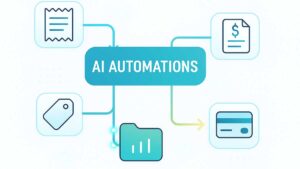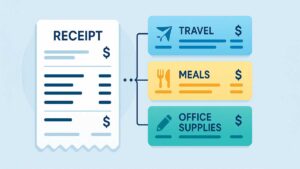A World Beyond Paper Receipts
Paper receipts used to be the only way to track purchases, but they are inconvenient, wasteful, and easy to lose. Today, businesses and individuals are shifting toward digital receipts that are easier to store, search, and analyze. This transition is not just about convenience. It is also about efficiency, compliance, and the move toward a more sustainable, paperless world.
The Limitations of Paper Receipts
Inconvenience and Physical Storage
Paper receipts pile up quickly. They fill drawers, wallets, and folders, and they often fade or crumble with time. When tax season comes, digging through stacks of fragile receipts becomes a frustrating, time-consuming chore.
Environmental Concerns
Most paper receipts end up in the trash within hours. They require trees, water, and chemicals to produce, yet only a small portion are ever saved. While receipt scanner apps cannot eliminate this waste directly, they encourage the shift toward digital record-keeping. Both scanned paper receipts and e-receipts can coexist until retailers move fully digital.
Prone to Loss or Damage
Receipts fade in sunlight, smudge when wet, and are easily misplaced. Losing a deductible receipt means potentially losing money. For businesses and freelancers, this can create costly mistakes in tax reporting.
Cost of Management
Sorting, filing, and manually entering paper receipts into spreadsheets takes valuable time. If you pay someone else to manage them, the cost adds up quickly. Either way, the process drains resources that could be spent on higher-value work.
The Advantages of Digital Receipts
Easy Access and Retrieval
Digital receipt apps make searching simple. Instead of digging through folders, you can find a receipt in seconds by merchant, category, date, or even specific text. For example, if you only remember the product name, a text search will quickly surface the receipt.
This convenience helps both individuals and businesses. A warranty claim or expense report that once took hours now takes moments.
Data Analytics and Insights
Unlike paper, digital receipts unlock insights. They can be automatically categorized and analyzed with tools like SparkReceipt.
- Freelancers and business owners can spot trends in office supply costs, utilities, or reimbursable employee expenses.
- Individuals can see how much they spend on dining out, subscriptions, or travel.
This data helps with smarter budgeting and reduces wasteful spending.
Enhanced Security and Compliance
Digital receipts are safer. Cloud backups protect against loss, while timestamps and data logs help prove legitimacy.
In the United States, the IRS accepts digital receipts for tax purposes. That means digital records meet legal requirements and make compliance easier.
Support From Major Retailers
Retailers are driving the shift. Apple, Target, Starbucks, Nordstrom, CVS, and many others already issue e-receipts through apps or email. As more companies adopt this practice, digital receipts will become the standard.
Why Digital Receipts Are the Future
Digital receipts do more than replace paper. They make expense management faster, smarter, and more secure. They reduce environmental waste and simplify compliance. Most importantly, they save time for freelancers, business owners, and individuals alike.
With the right digital receipt system, you can collaborate with accountants, avoid lost deductions, and streamline your financial record-keeping. SparkReceipt is a powerful option, offering smart scanning, search, categorization, and export features designed for modern businesses and teams.
If you are ready to make the transition from paper to digital, start now. The sooner you go digital, the sooner you will save time, money, and frustration.




